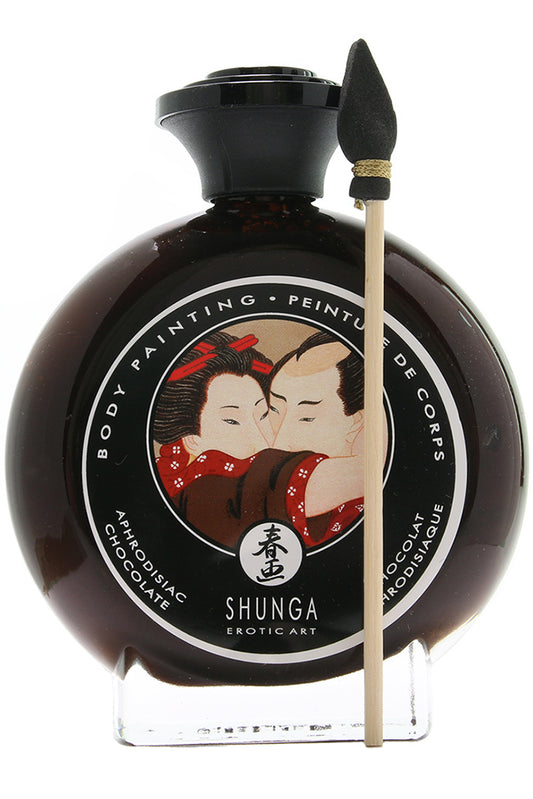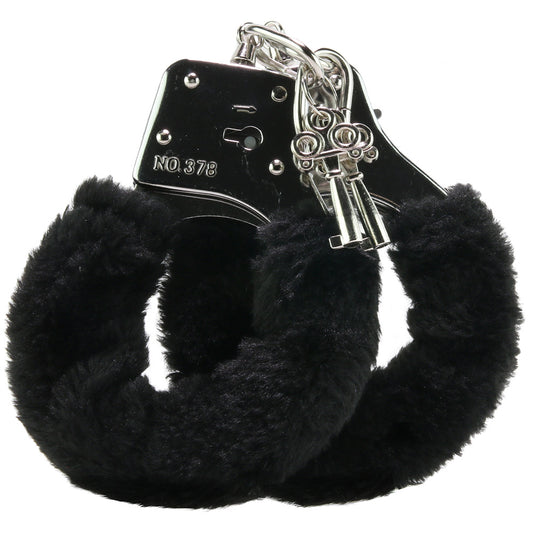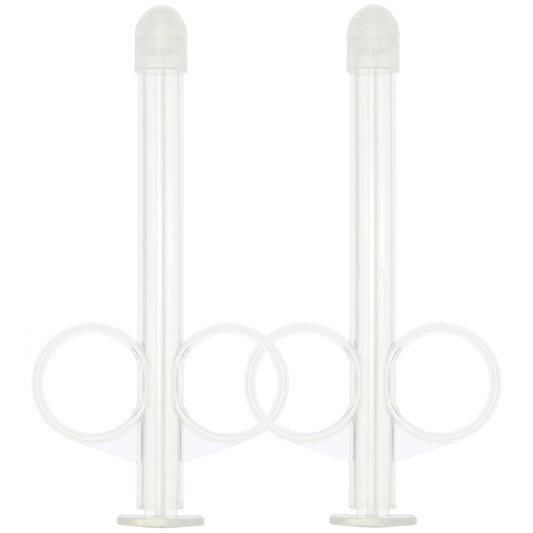
Key takeaways
- Aftercare is a vital part of a healthy sex life and sexual activity, especially in kink or BDSM play sessions
- During a BDSM scene, the sub’s system is often flooded with endorphins and adrenaline, and coming down from that flood is called subdrop
- Aftercare includes both physical and emotional support
- It’s normal to feel “crunchy” hours or even days after a scene, and to need a bit of support
- Sexual exploration is brave, and doing it together is bonding
- There’s always more to learn!
If you’ve entered into the wild and glorious world of BDSM , there’s one essential aspect with which you should be familiar: aftercare.
When it comes to intimacy in a sexual relationship, BDSM can provide a lot. You can get close to a partner through different types of BDSM that involve power, submission, role play, punishment, and pleasure. Explore sex toys for couples and discover a new world of fun with your partner.
That said, you can also trigger many intense feelings during a kink or BDSM session. Whether or not your partner has a trauma background, to be a great play partner, you need to know how to soothe your partner after a BDSM scene. In fact, some sexperts assert that even if you’re not in a BDSM relationship, and even if you’re “just” having casual sex, aftercare is a healthy and much-needed component of quality sexual health.
What is BDSM aftercare?
According to Dr. Jenni Skyler of The Intimacy Institute, “Aftercare is the physical and/or the emotional care-taking that occurs after a sexual encounter, and more specifically a BDSM encounter. Most BDSM experiences involve adopting fantasy roles, so aftercare is the time for partners to bring each other back to reality and readopt their day-to-day roles with one another. Think of it as resetting your equilibrium … Though the play portion of the experience might be over, it's not really over until the aftercare happens.”
Yep, you heard that right! According to many BDSM practitioners, a BDSM activity isn’t even over until aftercare is complete. It’s that critical.
Why is aftercare important?
BDSM community is clear that aftercare is critically important for various reasons. It’s worth noting, as well, that aftercare isn’t just for submissive partners (aka subs or bottoms). Dominant partners (doms) also have things come up during scenes and often need to receive aftercare, though their needs might differ. (Related story: Sometimes providing a lot of support to someone else can mean you need some yourself the next day!)
As one BDSM expert says, “[W]hy is aftercare necessary? Because a BDSM scene tends to be an intense, supercharged, and traumatic experience, especially for the sub. Sure, it’s usually cathartic as well, but it can still put someone through the wringer; sort of how running a few miles can make you feel great, but you’ll still need that period of cooldown (and maybe a shower) before you can feel relatively back to normal.”
Understanding the physical and emotional effects of BDSM
To fully understand the necessity of aftercare, it’s vital to go over a concept called subdrop (or sub drop). One of the best descriptions of this is by sex therapist Dr. Kate Balestrieri:
“You just had the best sexual experience of your life. Both you and your partner were so into it and settled into your dominant and submissive roles. The pain was pleasureful and the headspace was powerful. It was an intense BDSM scene! But now… now you have a feeling of dread and sorrow you can’t shake. Everything and everyone makes you feel upset and lonely. What is going on?”
She explains: “You’re likely experiencing sub drop for the first time! Don’t worry. It’s a totally expected experience, following an intense session, that just about every sub (and some Doms) are likely to experience after their BDSM play.”
Subdrop is also known as postcoital dysphoria, which the NIH defines as “a counterintuitive phenomenon characterized by inexplicable feelings of tearfulness, sadness, or irritability following otherwise satisfactory consensual sexual activity.”
Why does this happen? According to Dr. Balestrieri, “The first key to understanding sub drop is to understand subspace. The reason that BDSM feels so good is the chemical reactions that take place in your brain during a scene. During the intense emotions of a scene, your body releases tons of endorphins and adrenaline. Endorphins provide the body with an extremely euphoric feeling while experiencing pain. Adrenaline energizes you and keeps you going through the scene. The two combine together to provide you and your body with the euphoric feeling that you crave going into a scene both during and after.”
But after the scene, something else happens: both chemicals leave the body. So what felt truly incredible and amazing and out of this world can suddenly feel embarrassing or even hurtful. “This moment where the chemicals are no longer working for you, and you’re left to your own negative emotions is when sub drop kicks in,” says Dr. Balestrieri.
“Sub drop can look and feel different for every person who experiences it,” she says. “It can manifest as physical pain, extreme depression, irritability, anxiety, and fatigue. While some of these things are to be expected after any scene (especially pain and fatigue), sub drop is these feelings at high intensity. It can feel like a drastic shift in your mental health.”
Fortunately, you’re not permanently messed up. Subdrop is normal and doesn’t tend to last, especially when it’s handled correctly. And according to many sexperts, quality aftercare is one of the best and easiest ways to cope with subdrop!
What does aftercare look like?
A good flow for aftercare might look like this:
1. Even if it wasn’t an intense scene (but especially if it was) and especially if it was an impact play session, check for physical injuries that require immediate attention. With all the adrenaline and excitement and heightened state that a sub gets into during a scene, it can be easy to miss cuts, scrapes, or bruises that need attention. Soothe as necessary.
2. A sub may be shaky, so support them (sometimes physically) in getting to a spot where you can snuggle and be close. They’ll usually need a warm blanket to cuddle up in. Always make sure to have water for them.
3. Give them some space. Subs have often entered something called subspace, which can be a transcendent state of mind. It helps if you’re just quiet for a bit, allowing them to integrate what just happened.
4. Once they’re “back,” have a brief conversation. Maybe talk about what you both liked or didn’t about the scene, but save the more in-depth discussion for later.
5. See if they need anything — are they hungry? Any sore muscles they want rubbed? Do they want anything specific right now, including anything they need to hear at this moment? (i.e. “I’m not judging you; in fact, I loving you … you’re even more beautiful to me now than ever.”) Meet those needs.
6. Get dressed and clean up the space, adult sex toys, etc. This can help you reset and “land” again as you put things back together. This is also a good time for snacks and more water!
7. If the timing is right, come back together and have a more thoughtful and nuanced discussion about the scene. Prompts follow.
8. The next day, text or call and see how your partner is doing (or if you live together, you can check in in person. Be intentional about checking in specifically about this). New subs often don’t know about subdrop and may need some help integrating. Certain foods can help with this, including chocolate! Kinda like in the world of Harry Potter, chocolate helps you recover faster. ;)
Different types of aftercare
There are two general categories of aftercare: physical and emotional.
If you’ve been playing and one partner has been wearing a ball gag for a while, for example, they may be quite thirsty, and aftercare will likely involve quenching their thirst. If you’ve been engaging in impact play, you may want to put some soothing lotion on any stings or cuts (or burns, if you’ve been doing some wax play).
“But usually,” Skyler says, “aftercare involves reflective conversation. This is the opportunity for partners to be vulnerable with each other, debrief, and zero in on each other's emotional needs.”
Thus aftercare often includes discussing the scene in a meaningful and reflective way. As stated, this often comes after physical needs are taken care of, and when you’re both in a state of mind to be able to reflect. Once you’re there, you can each ask each other things like:
- How was that for you?
- What felt safe? What did you like or appreciate?
- Were you triggered or activated at any point?
- Upon reflection, did we need to use a safe word? If so, why?
- Were any boundaries crossed?
- Did anything not feel good or safe?
- What was super hot?
- What did we like that we want to keep as part of future experiences?
- Anything we want to definitely not do again?
Common risks and complications associated with BDSM play
One of the common aftereffects of BDSM play is the potential for one or both partners to feel shame. Perhaps someone feels ashamed of what got them hot or wet, or what they wanted to do to the other person. Maybe someone feels ashamed about how far they went, or how far they wanted to go. Sometimes BDSM dynamics can unlock parts of ourselves that we didn’t even know existed. This can be disorienting, especially if it’s our first time.
Listen, sexual arousal is complex, and sexual practices can get pretty intense pretty fast. Add to this, the fact that some folks are survivors of childhood sexual trauma, and you’ve got a lot going on.
One of the best ways to handle shame is to share it with someone safe. Hopefully, this can be the person you just did the scene with! But sometimes, it can also be a trusted friend or mentor after the fact.
When you’re listening to someone share their truth, it’s critical that you don’t judge them or shame them in that moment. For example, if they’re telling you that something during the scene triggered them — i.e. something you did — that is not a time to get defensive or tell them you were “just doing what you told me to.”
Instead, you want to listen deeply and with compassion. Tell them you’re glad they told you, and keep listening. Most importantly, they should feel heard, loved, and cared for. Once they feel safe and heard, you can talk about what you could both do differently next time and if anything needs to be adjusted.
The truth is, sometimes we’re not quite sure where our boundaries are until they’re crossed, so sometimes it takes discussing what happened in a safe way to figure it out.
Negotiating aftercare before the scene
Some of this you’ll learn as you go along, but it can be helpful to talk about aftercare before you even get started. For example, some experts suggest having soothing tea on hand, or a favorite stuffed animal.
Others suggest having one of your favorite soothing TV shows on hand, and it can be helpful to talk beforehand about which one would be good. Minimizing decision-making in the aftercare period can be helpful.
Techniques for providing emotional support after a scene
There are different types of emotional support. One is just praising or loving someone. Telling them all the things you like about them, or what you appreciate about how they showed up or are showing up. For many people, this is deeply soothing.
Another type of emotional support is asking, “Is there anything you need right now?” Sometimes being explicit can elicit an even better or more specific response on your part. Rather than guessing, you’re drawing out their truth.
This can be drilled into even further with, “Is there anything you’re needing to hear right now?” You may be surprised by the response. Sometimes it’s things like, “I need to hear that you don’t think I’m a dirty whore for having just done that with you.” Or, “I need to hear that you don’t think I’m a perverted prick for having just done that to you.”
The truth is, stretching ourselves sexually is brave. Taking risks around sexual arousal or sexual practices is a courageous act, and it’s OK to have certain needs met after an intense encounter.
It’s also good to remember that you or your partner’s needs may differ depending on the kind of BDSM activity you engage in. For example, impact play (spanking, hitting, whipping) may bring up different things for someone than humiliation play (being called certain names). You may be surprised by the strength of your reaction to something. We all come into these spaces with different histories and backgrounds – and yours is unique. You get to have your needs, whatever they are. Always remember that your needs are valid.
It can also help to remember that whether you or your partner orgasmed or not is not the point; it’s whether you enjoyed yourself and maybe even learned something about yourself. It’s also good to keep in mind that this whole thing is an exploration. You’re learning about yourself and your partner, and you will get better at things like aftercare over time.







